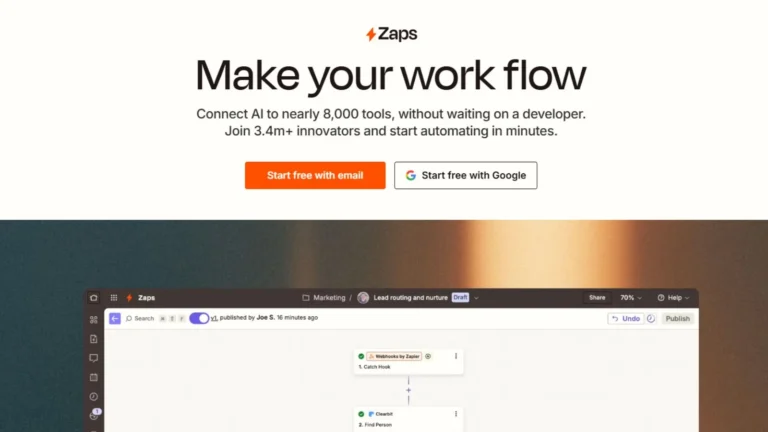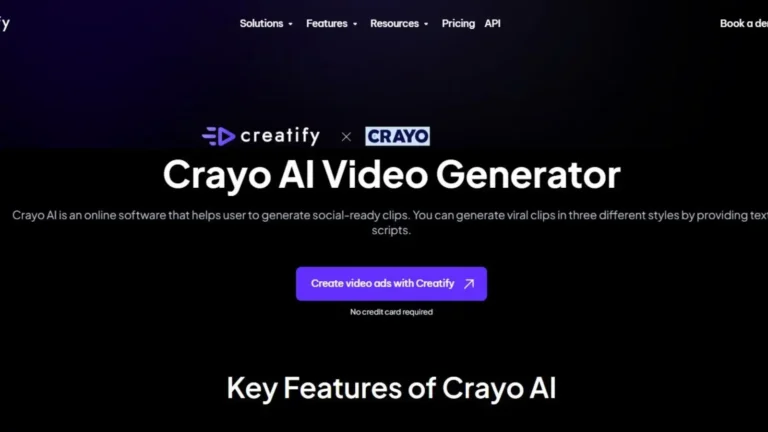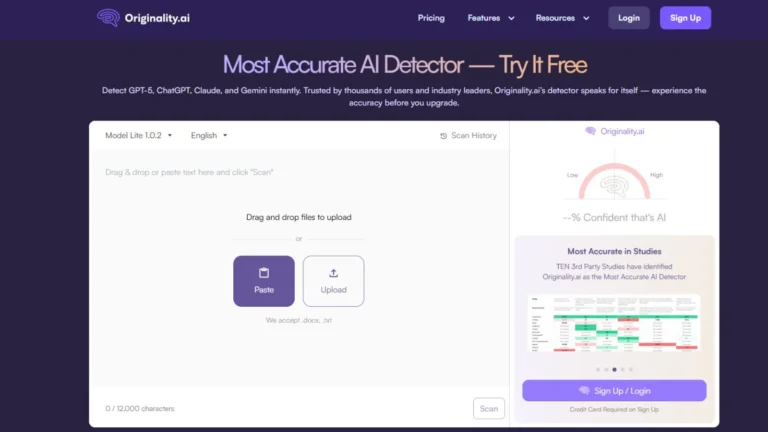UI Bakery is a low-code website building which presents fast, fashionable web application development.
UI Bakery is another low-code, multiple-use software tool that simplifies web application development a great deal for developers and non-developers. This application has the fame of building custom applications with minimal coding. The platform emphasizes the simple speed of development and efficiency and provides ideal tools and features that smoothen the process of software development, it is well-suited for teams or individuals who are looking to deliver robust web applications without compromising on the output produced.
This overview delves into the key features, pros, and cons of UI Bakery, which thrashes about in an in-depth view about how the above-mentioned platform facilitates fast, flexible, and efficient app creation.
Key Features of UI Bakery
1. Drag-and-Drop Responsive UI
UI Bakery is one of the prominent features involving its drag-and-drop interface for building responsive UIs. That feature lets the user construct even complex interfaces through a library of pre-built components. The parts automatically adapt to any screen size, and so no deep knowledge in CSS or JavaScript is required to obtain responsive design. This makes it such that core application functionality is the focus of developers rather than wrestling with complex front-end layouts, and it also enables non-developers to design interfaces without extensive technical skill. For businesses requiring an aesthetically pleasing and accessible interface, this drag-and-drop ability is priceless.
2. Code and No-Code Business Logic
UI Bakery supports no-code as well as code-based approaches. This means, in such respects, people of different technical backgrounds should be able to work through very complex data management and CRUD (Create, Read, Update, Delete) operations. Developers who want to have a code-based solution could use custom script writing while other people, who are not developers or who need something faster, can then use no-code tools in UI Bakery. This flexibility enables fast adjustment and makes it possible for rapid prototyping-the testing of multiple alternative solutions before choosing any development strategy.
3. Git Version Control
Code version control in team environments is just a natural fit with UI Bakery because Git happens to be one of the most popular control systems around. It enables developers to maintain a change history, track, and merge changes in code. It further tracks branching strategies very important in multi-developer teams. The UI Bakery integration with Git ensures a structured and well-organized development environment by allowing developers to work more effectively and roll back to earlier versions when necessary. This feature also gives developers control over their releases, ensuring only tested and approved code is used.
4. Single-Click Deployment
This allows UI Bakery to benefit in a profound manner in single-click deployment. Publish applications or updates to the web with one click, making rollouts of changes and delivery of updates to the end-users an easy task. For teams working in fast-paced environments, where updates have to occur quite frequently, this feature becomes indispensable. Streamlining publication enables low-risk operation when deploying and ensures that mission-critical updates get done on time.
Pros of Applying UI Bakery
1. Saves Time
UI Bakery’s tools and features speed up the development time and the time-to-market for custom applications. The platform gives a low-code environment with drag-and-drop UI, easier implementation of business logic, and user-friendly deployment options, which empowers the developers to deliver solutions faster than when using traditional coding methods. This time efficiency is very helpful for startups, small businesses or development teams that work under tight deadlines.
2. Customizable UI
With flexible UI components that are responsive in nature, UI Bakery provides developers to create visually great interfaces with minimal effort. A customizable UI library lets users make an interface not just professionally appearing but user-friendly also. Developers find various pre-designed elements and integrate them the way needed to build up an interface which would best deliver their requirements without spending hours in custom styling.
3. Flexible Logic Building
UI Bakery facilitates data and business logic management in both code and no-code modes, which is a flexible solution for teams with different technical capabilities. Users can either enable simple data interactions using the no-code workflow or control the back-end operations using code, allowing for both preferences to be satisfied. Flexibility brings the potential to choose how to achieve the right amount of balance between speed and customization based on project needs.
4. Seamless Deployment
The single-click deployment feature eliminates many of the complexities traditionally associated with application deployment. By streamlining this process, UI Bakery makes it easy to implement live changes and updates with minimal downtime, which is especially beneficial in environments where applications must be frequently updated or improved. Users can deploy with confidence, knowing that their applications will quickly reach end-users without the hassle of manual deployment processes.
Future Limitations of UI Bakery
1. Learning Curve
With any of the powerful development platforms, UI Bakery is accompanied by a learning curve with which the users, especially in an unknown low-code or UI Bakery-specific environment. Although it simplifies various concepts regarding development, the users need time to become comfortable with the UI Bakery interface, workflow, and features. However, this learning curve could be mitigated through UI Bakery documentation, tutorials, as well as community support, leading the user to explore and work on the full capabilities of UI Bakery.
2. Not Very Customizable
For instance, while UI Bakery offers customers hundreds of different options for selection, allowing the UI components to be fully customized, this platform may not provide the richer depth of customization that a true coding environment offers. For more specific applications or design needs, the pre-constructed UI and page templates in UI Bakery may be too restrictive. Custom requirements might therefore need to find a balance with the efficiencies provided by use of UI Bakery and support integration of custom code or third-party tools when deeper customization is required.
3. Integration Dependence
The success of UI Bakery depends on third-party tools integrations and their availability and compatibility. It is likely that users relying on certain software or services supporting their applications are at greater risk of hitting functionality dependence or necessity of further workarounds if the integrations are not limitless.
Precommitting to the platform can avoid development issues and ensure necessary integrations in the first place.
Conclusion
UI Bakery is an effective solution for teams who want to develop web applications with a rapid pace and without losing quality. Combining low-code methods with such powerful features as drag-and-drop UI building, code and no-code logic building, Git version control, and single-click deployment, UI Bakery accelerates software development time, cutting off the lengthy application time cycle for bringing applications to market. Its flexibility enables teams with diverse technical expertise to collaborate and contribute to the development process, making it a valuable tool for startups, small businesses, and larger teams alike.
Although UI Bakery will perhaps not replace full custom solutions where necessary, its features and flexibility make it very ideal for the use of all types of web applications. For those looking for something between speed, customization, and ease of use, UI Bakery is certainly a platform worth considering-it equips users with the right tools to streamline development, improve productivity, and support rapid delivery of modern web applications.




